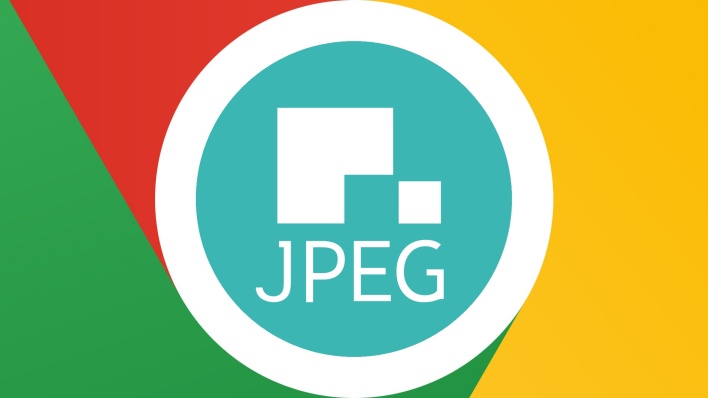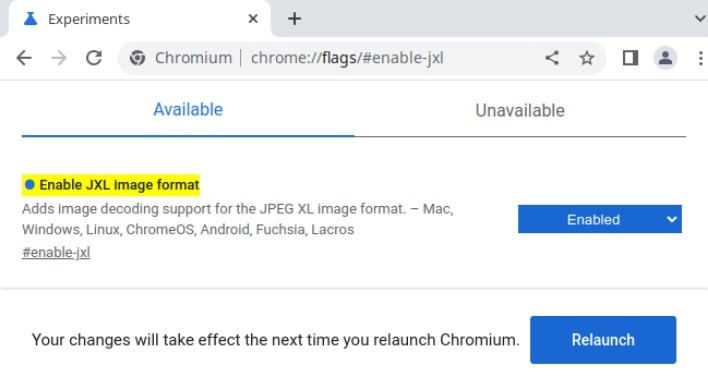JPEG XL Image Format Could Free Up Storage On Your Phone But Google Isn't Having It

JPEG XL is an emerging image file format designed to increase image fidelity while decreasing file size when compared to other popular image formats, particularly the old JPEG format. At present, both Mozilla Firefox and Google Chrome support the new image format as an experimental feature. However, it seems that Google is planning to drop JPEG XL support from its browser in favor of the WebP and AVIF formats.
The standard JPEG format is quite ancient in the computer world, dating all the way back to 1992, yet it’s still the most commonly used image file format. JPEG files are well known for having ugly compression artifacts, particularly when an image has been compressed multiple times. Nonetheless, we put up with such unsightly compression artifacts, because the compressed images take up significantly less space than images stored in lossless file formats like PNG. Images with smaller file sizes not only decrease the amount of space our devices need to store said images, but also increase the speed at which images load on the Web.
In recent years, various groups have developed different alternative image file formats intended to replace the older JPEG, PNG, and GIF formats with one that decreases file size without the noticeable artifacts and loss in fidelity that result from older compression codecs. One of the more widely supported alternatives is WebP, which was developed directly by Google. However, Google has more recently put its support behind the newer AVIF format, which the company had a hand in developing.
AVIF competes more directly with Apple’s HEIC format, as both AVIF and HEIC image files are generally both smaller in size and higher fidelity than WebP files, but use slower codecs. Speed is critical on the Web, where users expect pages to ideally load in less than the blink of an eye. So while WebP image files may look worse and be slightly larger than AVIF and HEIC files, they load significantly faster, making WebP a better choice for Web content.
The standard JPEG format is quite ancient in the computer world, dating all the way back to 1992, yet it’s still the most commonly used image file format. JPEG files are well known for having ugly compression artifacts, particularly when an image has been compressed multiple times. Nonetheless, we put up with such unsightly compression artifacts, because the compressed images take up significantly less space than images stored in lossless file formats like PNG. Images with smaller file sizes not only decrease the amount of space our devices need to store said images, but also increase the speed at which images load on the Web.
In recent years, various groups have developed different alternative image file formats intended to replace the older JPEG, PNG, and GIF formats with one that decreases file size without the noticeable artifacts and loss in fidelity that result from older compression codecs. One of the more widely supported alternatives is WebP, which was developed directly by Google. However, Google has more recently put its support behind the newer AVIF format, which the company had a hand in developing.
AVIF competes more directly with Apple’s HEIC format, as both AVIF and HEIC image files are generally both smaller in size and higher fidelity than WebP files, but use slower codecs. Speed is critical on the Web, where users expect pages to ideally load in less than the blink of an eye. So while WebP image files may look worse and be slightly larger than AVIF and HEIC files, they load significantly faster, making WebP a better choice for Web content.

The new JPEG XL format, which is based on Google’s PIK proposal and Cloudinary’s FUIF proposal, combines speed with small, good looking image files. Lossy JPEG XL images are generally 60% smaller than JPEG images of similar visual quality, while Lossless JPEG XL images are around 35% smaller (50% for HDR) than PNG image files. JPEG XL files can also be significantly smaller than JPEG files while lacking the ugly compression artifacts.
Like JPEG and PNG, JPEG XL supports progressive decoding, which is something WebP, AVIF, and HEIC all lack. Progressive decoding means that a webpage can begin by loading a lower quality version of the image while waiting to fully load the image. Loading an initial version of the image in this way can prevent images from suddenly popping into view and disturbing other elements on the page.
However, despite all the apparent advantages of the JPEG XL format, Google has submitted a commit for Chromium that would remove the current experimental support for the new file format from its browser. The company has explained this change by stating that “experimental flags and code should not remain indefinitely.” One might expect that Google would simply enable JPEG XL support by default in order to take the feature off the experimental feature list, but the company has chosen to do otherwise.
Google cites a lack of interest from the entire ecosystem, a lack of sufficient incremental benefits over existing formats, and a reduction in the maintenance burden, as further reasons for its decision. Since Google gave its explanation, developers and engineers have flooded the issue thread to express their displeasure for this decision and their support for the JPEG XL format. Perhaps we’ll see Google reverse course after the public outcry, or maybe this decision will mark the death of the fledgling file format, despite its supporters’ protests.
Like JPEG and PNG, JPEG XL supports progressive decoding, which is something WebP, AVIF, and HEIC all lack. Progressive decoding means that a webpage can begin by loading a lower quality version of the image while waiting to fully load the image. Loading an initial version of the image in this way can prevent images from suddenly popping into view and disturbing other elements on the page.
However, despite all the apparent advantages of the JPEG XL format, Google has submitted a commit for Chromium that would remove the current experimental support for the new file format from its browser. The company has explained this change by stating that “experimental flags and code should not remain indefinitely.” One might expect that Google would simply enable JPEG XL support by default in order to take the feature off the experimental feature list, but the company has chosen to do otherwise.
Google cites a lack of interest from the entire ecosystem, a lack of sufficient incremental benefits over existing formats, and a reduction in the maintenance burden, as further reasons for its decision. Since Google gave its explanation, developers and engineers have flooded the issue thread to express their displeasure for this decision and their support for the JPEG XL format. Perhaps we’ll see Google reverse course after the public outcry, or maybe this decision will mark the death of the fledgling file format, despite its supporters’ protests.

